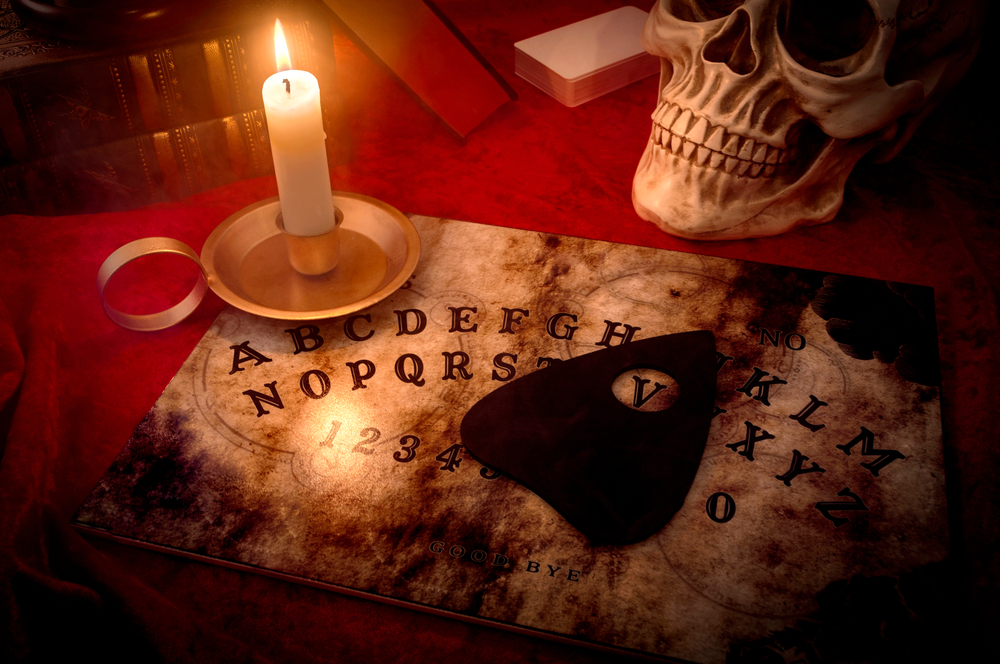
Say the word “necromancy,” and most people may picture eccentric sorcerers with armies of skeletons or zombies at their command. Yet like many human concepts, there’s much more to this supernatural tradition than pop culture tropes depict. With possible linkages to ancestor worship and prehistoric spiritual practices, the history of necromancy is more complex than you may think.
A Fine Line Between Ancestor Worship and Magic?
The Encyclopedia Britannica defines necromancy as occult methodologies intended to achieve communication with the dead. With such a broad definition, scholars and practitioners debate about the fine line between it and ancestor worship. Victor Domin, a Concordia University scholar, discusses this debate in light of ancient Israelite customs. Would merely praying to an ancestor be considered necromancy, or would one need to perform specific rituals to request explicit answers or powerful boons?
Others suggest that connections may exist between necromancy and shamanism. Both focus on communing with forces and entities beyond our physical reality. Professor Thomas T. Hills describes shamanic practices as exploratory divination that seeks answers from outside the bounds of ordinary rationality. He points to the Ghost Dance, a religious movement that brought together many Indigenous American cultures. The goal was to call up armies of spirits, gaining their aid to get white colonists to leave them alone and disappear.
Practices and Lore in the Ancient World
Necromancy methods and concepts developed within several civilizations, including the Babylonians, Egyptians, and Assyrians. The Etruscans, who were contemporaries with the ancient Greeks and forerunners to the Roman empire, also had their own practices. Methods included animal sacrifice, talismans, protective magic circles, consuming ritualistic foods, wearing the deceased’s clothing, and even desecrating corpses.
More evidence of this concept exists in several classical works. In Homer’s Odyssey, the protagonist receives aid from the sorceress Circe for his journey into the Underworld to speak with the dead prophet Tiresias. Meanwhile, a familiar Old Testament story features King Saul seeking out the Witch of Endor to communicate with Samuel. When awakened, the deceased prophet rebukes Saul and warns of his impending defeat by Philistine armies. Interestingly, Homer mentions a fire pit used in Odysseus’s rituals, while the Witch of Endor is sometimes depicted using a pit to summon Samuel.
Necromancy in Modern Times
Surprisingly, necromancy didn’t die out in the Middle Ages. Modern practitioners exist, as Spiral Nature Magazine details in an August 2014 article. Methods and belief systems vary, but most contemporary necromancers consider it a sacred art. These individuals emphasize a reverential approach and take great care to avoid dishonoring the dead.
Of course, communicating with the dead appears in a lot of contemporary art and literature. The 1999 film “The Sixth Sense” features a young boy gifted with the ability to see and talk to spirits. His most famous line, “I see dead people,” is oft-quoted and memed even 20 years after the movie’s release. Necromancy also appears in several other works, including the novels of H.P. Lovecraft, the Dungeons and Dragons tabletop games, Rin Chupeco’s “The Bone Witch” trilogy, and video games series such as Skyrim. The evil necromancer has been a common image, but this trope has also been successfully subverted many times. One notable example is Dorian Pavus, a mage in the game “Dragon Age: Inquisition” who allies himself with the player character to fight the monstrous villain Corypheus.
Dead Men Tell No Tales?
In the wake of a loved one’s death, we’re often left with unanswered questions. At the same time, many cultures venerate ancestors and deceased community members. It’s no surprise that humans throughout history have attempted to speak with the dead. Whether to benefit from their wisdom, gain supernatural powers, or achieve closure for unresolved situations, necromancy is an idea that transcends cultural, religious, and temporal barriers.

